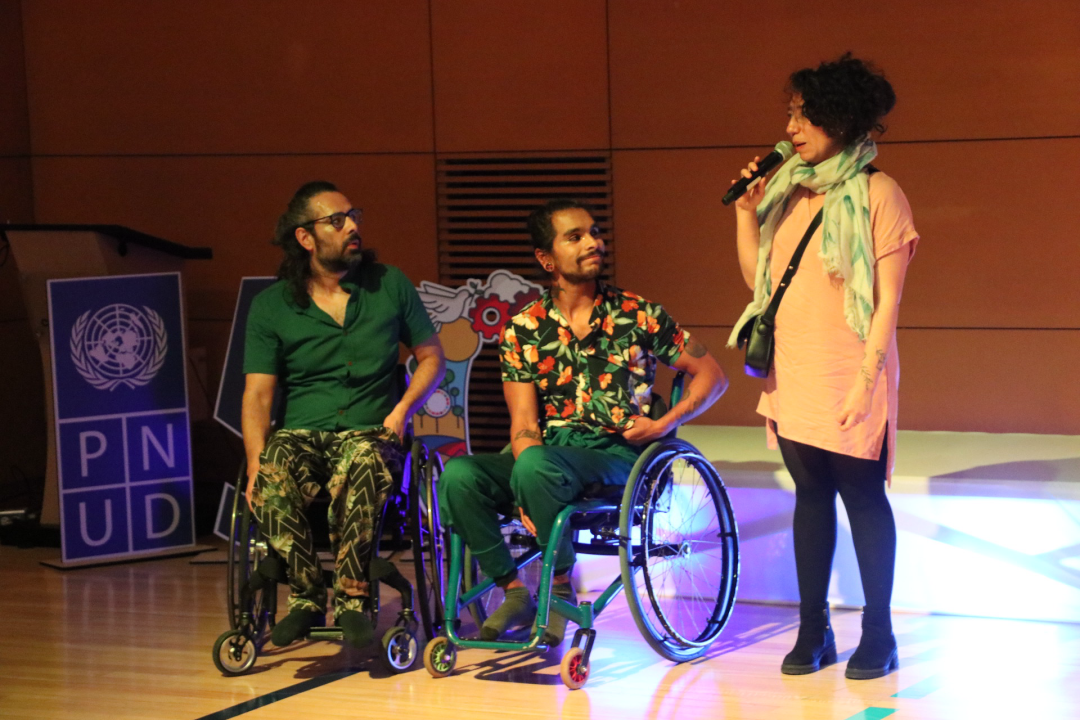Disclaimer:
Please be aware that the content herein has not been peer reviewed. It consists of personal reflections, insights, and learnings of the contributor(s). It may not be exhaustive, nor does it aim to be authoritative knowledge.
Overview
Prepared by (Name of the experimenter)
Juan David Martín
On date (Day/Month/Year)
Decembre, 2024.
What action learning plan is this activity related to?
Unpaid care, disability and gender transformative approach pilot
Design
What is the specific learning intent of the activity? Why is it important to do this experiment?
The primary goal of the experiment is to foster the participation of Persons with Disabilities (PwD) in peacebuilding initiatives by establishing strategic alliances and ensuring security through the following actions.
1. Identifying key strategies to integrate inclusion and a disability-focused approach into the project with Norway.
2. Positioning UNDP within the ecosystem and advancing the disability policy agenda.
Key dependent variables include:
- Otherness, understood as the perception of PwD as equals and essential contributors to the construction of social peace.
- Empathy, encompassing both affective and cognitive empathy, fostered through direct exposure to personal life stories and shared spaces.
- Articulation, defined as the ability to collaborate with the ecosystem to promote the social and productive inclusion of signatories, victims, and participants with disabilities.
What is your hypothesis? IF... THEN....
If meeting spaces are facilitated, then empathy towards signatories, victims and participants with disabilities will increase.
Does the activity use a control group for comparison?
Yes, a different group entirely
Describe which actions, with whom, where, when will you (or did you) take to test your hypothesis:
To assess the impact of creating a dedicated space for interaction and recognition of Persons with Disabilities (PwD) on fostering empathy (reducing biases and increasing willingness to include), a controlled test was designed with two distinct phases.
These phases aim to connect decision-makers with the experiences and capabilities of signatories, victims, and participants with disabilities. The key variable is the frequency of interaction with PwD. The experiment includes two groups:
Control Group: Members of civil society, randomly selected.
Treatment Group: Individuals who visit the gallery and participate in the workshop.
The evaluation instrument used was a questionnaire designed to measure levels of empathy and potential biases toward signatories, victims, and participants with disabilities. This instrument was administered to up to 30 individuals in each group..
If you worked with partners, please choose what sector they belong to (select all that apply)
Civil Society, Academia, Private Sector, Government (& related)
What is the total estimated monetary resources needed for this experiment?
Less than 1,000 USD
Please upload any supporting images or visuals for this experiment.
Please upload any supporting links
Results
Was the original hypothesis (If.. then) proven or disproven? In which way do the results support the original hypothesis or not?
The results of the experiment broadly validate the initial hypothesis, demonstrating a positive disposition among participants toward individuals with disabilities. From a behavioral perspective, this shift reflects a progression from otherness to empathy, enabling collective action and fostering collaborative efforts in both the short and medium term.
In contrast, survey results from members of civil society without direct connections to the disability or reintegration ecosystem reveal tendencies aligned with otherness, antipathy, and segregation.
The hypothesis underlying the experiment posits that individuals with prior sensitization exhibit greater empathy and a heightened willingness to collaborate with people with disabilities. This readiness, whether observed before or after an intervention, is attributed to their cognitive and social exposure to the realities faced by individuals with disabilities.
What are the most important learning outcomes of the experiment? Are any changes recommended?
To foster empathy and facilitate collective action for the social inclusion of signatories, victims, and participants with disabilities, the following recommendations are proposed:
Invest in Awareness: Develop and promote programs and activities aimed at increasing disability awareness. Such initiatives can significantly impact by transforming biases, attitudes, and behaviors, thereby fostering greater empathy and recognition of otherness.
Understand the Population Spectrum and Stakeholder Map: It is essential to identify where individuals and stakeholders fall on the spectrum of awareness and empathy. This understanding will enable resources, investments, and efforts to be directed toward building alliances that enhance and support collective action. This approach prioritizes complementing and enabling collaboration rather than solely generating emotional and cognitive empathy.
Considering the outcomes of this experimental activity, which of the following best describe what happened after? (Please select all that apply)
This experiment did not scale yet
Please add any supporting links that describe the planning, implementation, results of learning of this activity? For example a tweet, a blog, or a report.
Learning
What were the main obstacles and challenges you encountered during this activity? What advise would you give colleagues trying to replicate this experimental activity?


 10Reduced innequalities
10Reduced innequalities 16Peace, justice and strong institutions
16Peace, justice and strong institutions 17Partnerships for the goals
17Partnerships for the goals
Comments
Log in to add a comment or reply.